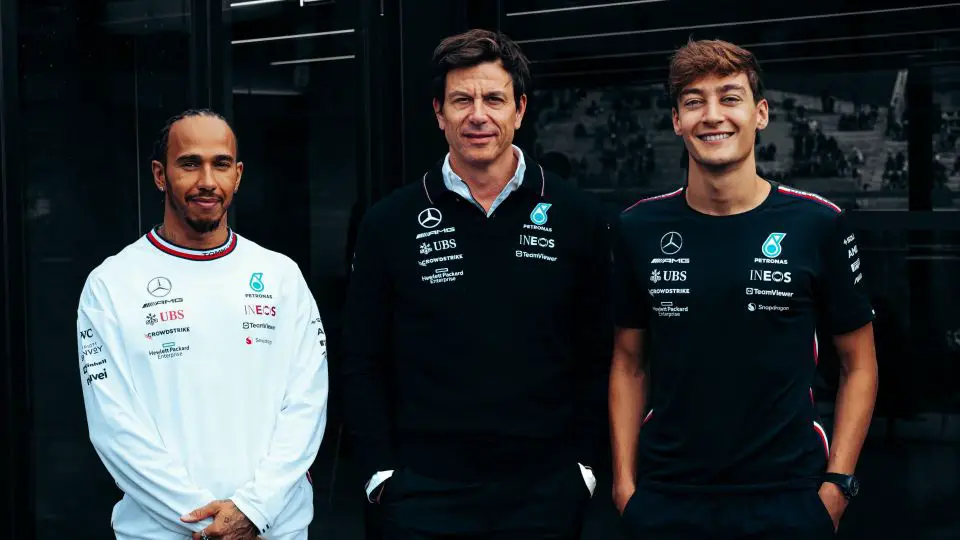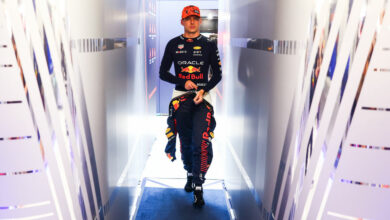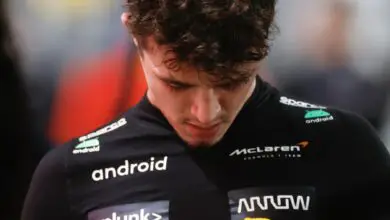Mercedes Unveils Bold Experiments for W15 in Melbourne: A Strategic Turnaround Effort at the Australian Grand Prix
In a decisive move, Mercedes has announced plans to experiment with the W15’s setup at the Australian Grand Prix. The strategy aims to overcome the car’s recent challenges, including significant issues with bouncing and poor performance in high-speed corners.
Key Takeaways:
- Mercedes is actively seeking solutions to the W15’s bouncing problems and suboptimal performance in high-speed corners, specifically targeting improvements for the upcoming Australian Grand Prix.
- The team is utilizing data from both the Bahrain and Saudi Arabian Grands Prix, combined with insights from prior tests, to formulate new strategies for the practice sessions in Melbourne.
- Andrew Shovlin, Mercedes’ trackside engineering director, emphasizes the need to address deep-seated issues affecting the performance of both Lewis Hamilton and George Russell, despite their different car setups.

In a recent announcement, Mercedes has confirmed it will be conducting experimental adjustments to the W15 at the Australian Grand Prix. This decision comes after the car’s notable difficulties with bouncing and suboptimal performance in high-speed corners, which were evident in recent races. The team is poised to analyze data from past events, including the Bahrain and Saudi Arabian Grands Prix, to develop effective strategies for Melbourne’s practice sessions.
Andrew Shovlin, Mercedes’ trackside engineering director, spoke to Autosport about the team’s approach, “There’s definitely data that we’re picking through from Jeddah. We’re also looking at data from the Bahrain race, Bahrain test, and we will come up with a plan for how we approach free practice in Melbourne. But it’s not just based on what we did in Jeddah.”
Mercedes is not limiting its analysis to recent races but is also drawing insights from earlier tests and events. Shovlin detailed the efforts of various departments, stating, “There’s a lot of work going on within the aerodynamics department, vehicle dynamics department. We’re trying to design some experiments there that will hopefully give us a direction that’s good for performance.”
The team faces a significant challenge in high-speed corner performance, as noted by Shovlin, especially following their experience in Bahrain. He elaborated on the issues, “One of them was the balance wasn’t great. So those very fast corners, the walls aren’t particularly far away – so the ones where the driver wants a lot of confidence – and quite often we were snapping to oversteer if they really leant on the tyres. And you can easily imagine how unsettling that is for the drivers. Now, that was a factor in qualifying and the race.”
The car also experienced pronounced bouncing, notably in low fuel conditions during qualifying, which was less problematic during the race with higher fuel loads. Shovlin remarked, “In qualifying we were also suffering a bit with the bouncing. That was less of a problem in the race. There’s more fuel on the car. You’re going a bit slower. And that seemed to calm down, and wasn’t such an issue.”
As Mercedes gears up for the Australian Grand Prix, the focus is on enhancing grip in corners similar to those in Bahrain. Shovlin emphasized the need to fully understand the car’s limitations, highlighted by the similar challenges faced by both Hamilton and Russell, even with varying setups. He concluded, “When you change things, you can see the differences. So, one car making changes, you can see how it performs run-to-run. We can also look at the global performance of the two cars, but fundamentally, the limitations that we had in qualifying and the race, they were broadly the same for both. So it’s telling you it’s not a small difference, it’s not a tiny bit of camber or a spring or bar here and there. It’s something more fundamental that we need to dig into and understand.”


